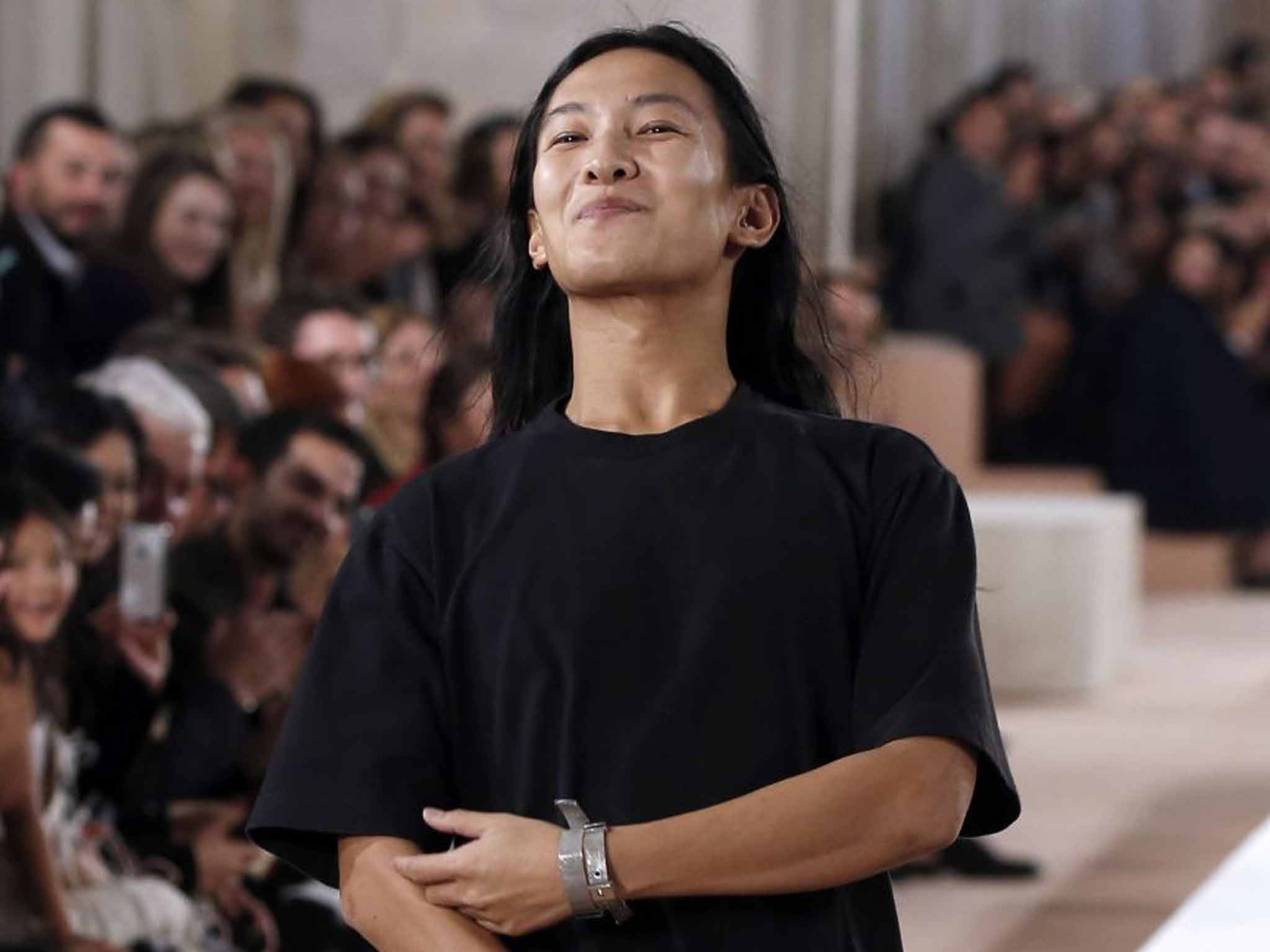Was 2015 the year fashion crashed? From departing designers to collapsing seasons
There's something not quite right in the fashion industry today

Your support helps us to tell the story
From reproductive rights to climate change to Big Tech, The Independent is on the ground when the story is developing. Whether it's investigating the financials of Elon Musk's pro-Trump PAC or producing our latest documentary, 'The A Word', which shines a light on the American women fighting for reproductive rights, we know how important it is to parse out the facts from the messaging.
At such a critical moment in US history, we need reporters on the ground. Your donation allows us to keep sending journalists to speak to both sides of the story.
The Independent is trusted by Americans across the entire political spectrum. And unlike many other quality news outlets, we choose not to lock Americans out of our reporting and analysis with paywalls. We believe quality journalism should be available to everyone, paid for by those who can afford it.
Your support makes all the difference.
Fashion is frequently said to be dying. It's an incendiary, inflammatory and always news-worthy point of view, offered at various points since the early 1970s, but ramping up in intensity in recent years. Fashion, we're told, is crashing; fashion is breaking or is broken; fashion needs a fix. Fashion's over.
The perceived causes of the imminent demise of the fashion system – which has survived a century and a half since the invention of haute couture and the notion of seasonal change – are manifest, and often trivial. The rise of ready-to-wear was once cited, as was the impact of punk, shattering fashion and fragmenting its once-singular message. Latterly, the inexorable rise of the pre-collection has been seen to undermine the traditional stronghold of the biannual catwalk show, counting as it now does for about two thirds (conservatively) of designers' overall sales. And what about the commercial impact of fast fashion, which is nothing to be sniffed at? Zara's annual turnover was £13.2 billion in 2014; H&M's clocked in at £13.5 billion; by contrast, Louis Vuitton's was £6.7 billion.
Whatever, for all the money being made, there's something not quite right in the fashion industry today. Let's take stock of what's happened over the past five years, with fashion blighted by designer dismissals, breakdowns and suicide. Lee Alexander McQueen's death in February 2010 and John Galliano's departure from Christian Dior in 2011 had the highest profiles, but were followed in rapid succession by upheavals at houses including Vuitton, Jil Sander, Rochas and Balenciaga; and this year alone there have been changes of creative director at Gucci, Lanvin, Donna Karan, Dior and Balenciaga (again).
The toppling of fashion's potentates is nothing new, but there's something in the speed of the current turnover that's arresting, to the point of alarming. Both Elbaz and Raf Simons – the former artistic director of Dior's womenswear whose surprise departure in October ranks as one of the year's biggest stories – have spoken disparagingly of the speed of the industry. Last December, Simons talked to me about the demands of the vast machine of Christian Dior and how he employed two creative teams, each working on three of the six collections a year he presented for the house (although ranks of commercial products were spun off from those), with the designer ricocheting between them to generate the necessary number of ideas. I saw Elbaz a week after what proved to be his final Lanvin show, when he disparagingly tapped my Dictaphone and commented, “We don't listen, we record.” He went on to lament fashion's contemporary pace and reliance on digital technology.
Denouncing change in an industry devoted to it – to an inbuilt, artificial obsolescence determined by whim and taste rather than the actual expiry date of product – is foolish. Yet it is equally facile to dismiss the events of the past 12 months as simply engendered by fashion's very nature. “Fast fashion” is no longer a niche of product, but an attitude affecting the industry at every level.

Hence the fact that New York Fashion Week is set to challenge the whole seasonal system, with labels adopting a “show now, buy now, wear now” model. Thakoon is restructuring his business around it; Rebecca Minkoff will be showing her spring/summer 2016 collection in February – the traditonal date for autumn/winter – allowing her customers to purchase immediately. And Burberry and Moschino both offer customers the chance to buy immediately from the catwalk. (Jean Monnier, of luxury retailer Monnier Freres, says that 75 per cent of their Moschino product – predominantly accessories – sells immediately.) “Something's not right any more,” says the chairperson of the Council of Fashion Designers of America (CFDA), Diane von Furstenberg, of the prevailing seasonal arrangement. “Everything needs to be rebooted.”
But – and it's a big but – will making things available faster make them better? Or more desirable? Fashion today is obsessed with speed – but isn't it part of the problem, rather than the solution? It's a relatively new thing to mention alongside Louis Vuitton such mass retailers as H&M and Inditex (owner of Zara and a number of other names peppering the modern high street: Pull&Bear, Massimo Dutti, Bershka). But the challenges facing the former have been instigated by the latter. Many retailers now slice up their collections to deliver in increments, mimicking the repeated drops of product into high street chains. “For us, it is six collections a year,” says Bruno Pavlovsky, president of fashion at Chanel. “Which means a collection for us every two months.” Dior does the same, confirms its CEO Sidney Toledano. “They are excited by new things,” he says of his clientele. Yet, paradoxically, when I interviewed Louis Vuitton's CEO Michael Burke in May – on the bluff above Palm Springs, where the brand staged its 2016 cruise show – I was told how, if clothing “changes every three months and every six months, unless you're a fashionista, it's going to become very, very tiring.”
Confused? You bet. The industry is confused right now: the designers, their collections, and the journalists watching them. And no wonder, given the contradictions; with brands lauding luxury, distancing themselves from the vagaries of “fashion” and trying to create something eternal but ever-fluctuating, satisfying a perceived need for newness driven by a clientele painted as insatiable nymphomaniacs driven by the greatest aphrodisiac of all: change.
Although, first and foremost, fashion is a business, the coupling of commerce with creativity is the vital element. Right now, the balance is out of whack. That is the fundamental problem with fashion today. Designers aren't looked on as people any more, but as machines to churn out clothes, ideas and quotes; and machines that can be easily turned on and off. Raf Simons cited the unforgiving pace at Dior as a contributing factor to his own departure; but others have pointed to a lack of overall control. (His remit was restricted to womenswear, without input into store design, advertising, or the behemoth beauty business). Alber Elbaz reportedly clashed with Lanvin's owner Shaw-Lan Wang: a personal statement following his dismissal closed with a barbed comment hoping that Lanvin “finds the business vision it needs”. Sources close to Elbaz (also a shareholder) say he was increasingly unhappy with management decisions.
I wonder if 2015 will go down in history as contemporary fashion's annus horribilis – or if it's merely a portent of things to come? Although something's wrong in high fashion right now, it's been bubbling under the surface for years and began to break through earlier this decade. Designers are unhappy, retailers are fidgety and uncertain about the clothes they're buying, international markets are volatile, and brands' profits and losses fluctuate alarmingly.
What's the remedy? I'm not sure I know. Certainly it's not making yet more clothes for an already saturated market; probably not making them faster, although maybe that will combat a new-fangled marketing notion of “consumer fatigue”.
But what about designer fatigue? Or maybe fashion fatigue – of clothes in stores, images on screens, magazines, everything? Maybe we're all – designers, customers, journalists – just tired of so much stuff being relentlessly rammed down our throats? And perhaps we all need breathing space, before the whole damn industry comes apart at the seams, like a badly-made, quickly-sold handbag.µ
Join our commenting forum
Join thought-provoking conversations, follow other Independent readers and see their replies
Comments